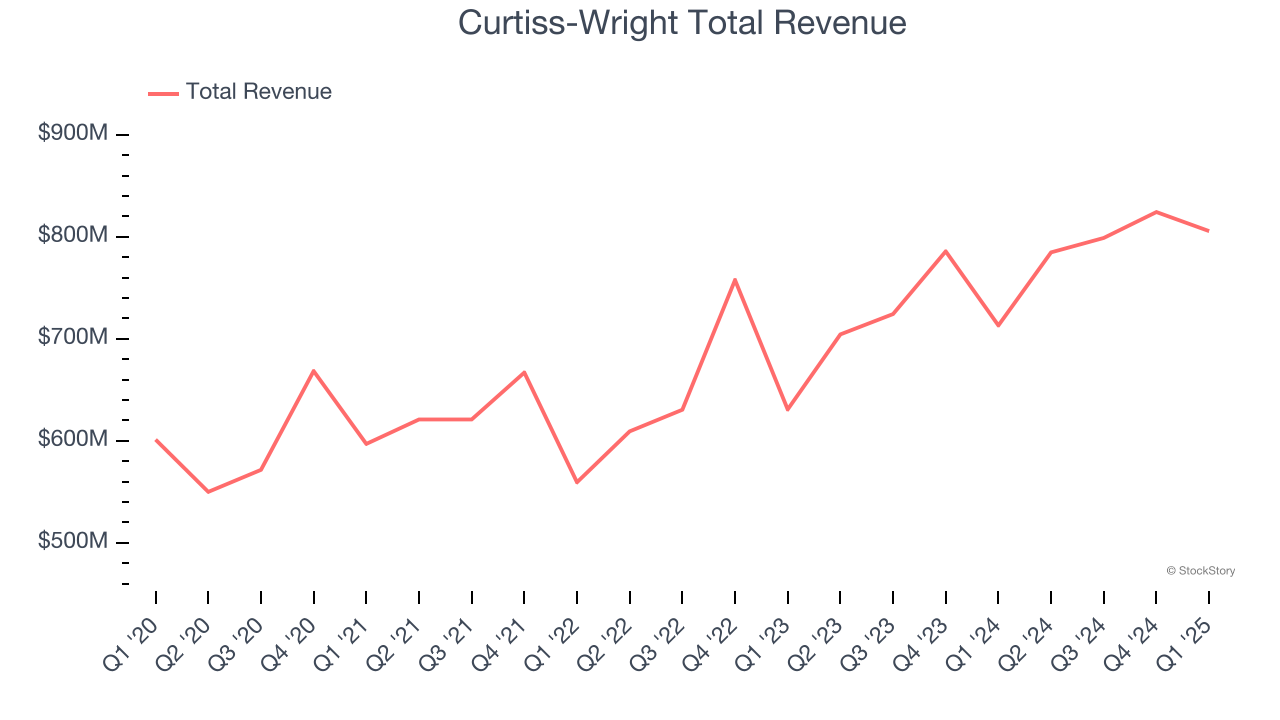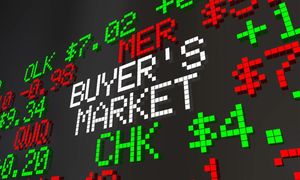
Looking back on aerospace and defense stocks’ Q1 earnings, we examine this quarter’s best and worst performers, including Axon (NASDAQ: AXON) and its peers.
Emissions and automation are important in aerospace, so companies that boast advances in these areas can take market share. On the defense side, geopolitical tensions–whether it be Russia’s invasion of Ukraine or China’s aggression toward Taiwan–have highlighted the need for consistent or even elevated defense spending. As for challenges, demand for aerospace and defense products can ebb and flow with economic cycles and national defense budgets, which are unpredictable and particularly painful for companies with high fixed costs.
The 31 aerospace and defense stocks we track reported a strong Q1. As a group, revenues were in line with analysts’ consensus estimates while next quarter’s revenue guidance was 0.5% below.
Luckily, aerospace and defense stocks have performed well with share prices up 16.2% on average since the latest earnings results.
Axon (NASDAQ: AXON)
Providing body cameras and tasers for first responders, AXON (NASDAQ: AXON) develops technology solutions and weapons products for military, law enforcement, and civilians.
Axon reported revenues of $603.6 million, up 31.3% year on year. This print exceeded analysts’ expectations by 2.8%. Overall, it was an exceptional quarter for the company with an impressive beat of analysts’ sales volume and EBITDA estimates.

The stock is up 27.9% since reporting and currently trades at $765.34.
Best Q1: Curtiss-Wright (NYSE: CW)
Formed from a merger of 12 companies, Curtiss-Wright (NYSE: CW) provides a range of products and services to the aerospace, industrial, electronic, and maritime industries.
Curtiss-Wright reported revenues of $805.6 million, up 13% year on year, outperforming analysts’ expectations by 5%. The business had an exceptional quarter with a solid beat of analysts’ EBITDA estimates.

The market seems happy with the results as the stock is up 27% since reporting. It currently trades at $460.52.
Is now the time to buy Curtiss-Wright? Access our full analysis of the earnings results here, it’s free.
Weakest Q1: AerSale (NASDAQ: ASLE)
Providing a one-stop shop that integrates multiple services and product offerings, AerSale (NASDAQ: ASLE) delivers full-service support to mid-life commercial aircraft.
AerSale reported revenues of $65.78 million, down 27.4% year on year, falling short of analysts’ expectations by 26.3%. It was a disappointing quarter as it posted a significant miss of analysts’ adjusted operating income estimates.
AerSale delivered the weakest performance against analyst estimates in the group. As expected, the stock is down 16.5% since the results and currently trades at $5.87.
Read our full analysis of AerSale’s results here.
Hexcel (NYSE: HXL)
Founded shortly after World War II by a group of engineers from UC Berkley, Hexcel (NYSE: HXL) manufactures lightweight composite materials primarily for the aerospace and defense sectors.
Hexcel reported revenues of $456.5 million, down 3.3% year on year. This print missed analysts’ expectations by 3.4%. It was a disappointing quarter as it also produced full-year revenue guidance missing analysts’ expectations.
Hexcel had the weakest full-year guidance update among its peers. The stock is up 8.4% since reporting and currently trades at $54.75.
Read our full, actionable report on Hexcel here, it’s free.
Rocket Lab (NASDAQ: RKLB)
Becoming the first private company in the Southern Hemisphere to reach space, Rocket Lab (NASDAQ: RKLB) offers rockets designed for launching small satellites.
Rocket Lab reported revenues of $122.6 million, up 32.1% year on year. This result topped analysts’ expectations by 0.8%. Overall, it was a very strong quarter as it also produced EBITDA guidance for next quarter exceeding analysts’ expectations and a solid beat of analysts’ EBITDA estimates.
The stock is up 20.2% since reporting and currently trades at $27.80.
Read our full, actionable report on Rocket Lab here, it’s free.
Market Update
The Fed’s interest rate hikes throughout 2022 and 2023 have successfully cooled post-pandemic inflation, bringing it closer to the 2% target. Inflationary pressures have eased without tipping the economy into a recession, suggesting a soft landing. This stability, paired with recent rate cuts (0.5% in September 2024 and 0.25% in November 2024), fueled a strong year for the stock market in 2024. The markets surged further after Donald Trump’s presidential victory in November, with major indices reaching record highs in the days following the election. Still, questions remain about the direction of economic policy, as potential tariffs and corporate tax changes add uncertainty for 2025.
Want to invest in winners with rock-solid fundamentals? Check out our Top 6 Stocks and add them to your watchlist. These companies are poised for growth regardless of the political or macroeconomic climate.





